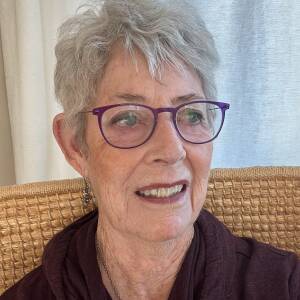Another World, Another Life
The picture is of a snapshot that has sat on the bookshelf in the library since 1986 when I visited my friend Jean in Bali. We are pictured here, in the dress requested by the local commune when visiting a temple. Jean still lives with her husband William in Ubud, where they have founded a foundation called Threads of Life, dedicated to preserving the traditional textiles basketry and other art of Indonesia.
The subject of cultural preservation vs. cultural appropriation or cultural domination in all of its many different forms often occupies my thoughts and, inspired by several blippers' recent entries I offer my own dissociated thoughts on the subject. It may, in fact be a subject of many parts because it it is complicated and I don't have much to do until my new project arrives.
The effect of cultures and environments upon each other can be either enhancing or extremely damaging. Blethers mentions the 'braided paths' around and through the bogs that all hikers are familiar with, and the sensitive way a path has been strengthed to improve access to a hill without turning the approach into a mudhole. Freespiral wonders what an individual's responsibility is in preserving and maintaining neglected and disappearing holy wells in Ireland. And Hillary's View shows a wonderful exhibit in a forest in Switzerland of photos of an isolated tribe 'in the shadow of the Himalaya'. Should a road be built to connect them to the outside world and allow more of the outside world into theirs?
Back to my friends Jean and William. I had a long conversation with William many years ago about their ongoing work and their philosophy about a unique culture whose underlying beliefs are based on a rather kind and gentle form of Hinduism mixed with a bit of animism. One of the things that distinguishes Balinese attitudes from many other places is their openness to collaboration with other cultures combined with an unwavering faith in their religion with all its ceremonies and offerings.
Colin McPhee has written a wonderful book about this kind of collaboration called A House in Bali. Another interesting book by Miguel Covarrubias is called Island of Bali.
Jean and William became fascinated with the intricate and beautiful textiles created by Indonesian artisans largely as items of ceremonial dress or bridewealth. In collaboration with a Balinese family, Jean and William noticed that the old traditions of weaving and dying these cloths were being lost, replaced by cheaper acrylic dyes and modern mechanized looms from China and India. The art of dying and weaving double ikat cloths (a subject in itself) and other intricate weavings on simple backstrap looms was disappearing as the older people who knew how to do it were dying and taking their knowledge with them.
William told me that their philosophy of preserving the old ways was to visit villages and learn about the surviving traditional methods, then work with the younger people to encourage them to continue. They found out what they needed, bought some of the resulting cloths and baskets, and sold them at a gallery they opened in Ubud. The profits went back to the villages to support the effort. Check out their work at Threads of Life if you are interested.
I think William and Jean had learned something Margaret Mead had not. Without respect for the indigenous culture, those who interfere, however good their motives, will not succeed. Margaret Mead placed herself above the people of the culture she was studying, the famous example being her book, Coming of Age in Samoa. She assumed she could ask the most intimate questions and get straightforward answers. Her subjects, rightfully wondering why on earth this white stranger was asking such personal questions simply told her, as it was later revealed,
whatever they felt like.
In this particular case, careful collaboration seems to be the answer.
I promise to warn you when I move on to monuments and tourism....

Comments
Sign in or get an account to comment.


